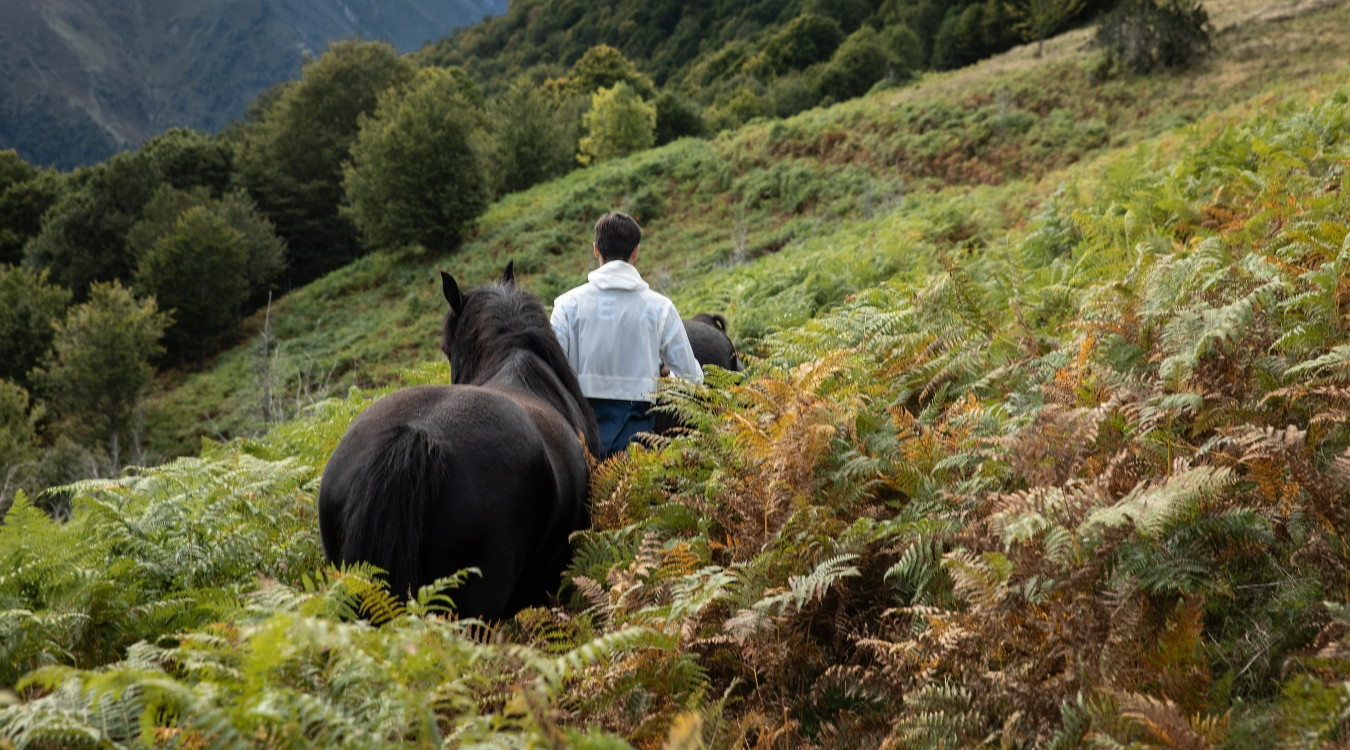Plants and trees toxic to horses

Our horses, donkeys and ponies live in a world where vegetation abounds. However, in their pasture, out for a walk or on the edge of the paddock hide dangers that are often overlooked such as toxic plants and trees that can compromise the health and well-being of our equidae.
It is crucial for owners and riders in general to be aware of the specific characteristics of potentially lethal plants. In this article, we describe the various poisonous plants and trees that can pose a threat, outlining the signs of poisoning, the associated risks and the preventive measures that are essential to safeguard their health.
Plants and trees toxic
The main toxic plants
The following is a non-exhaustive list of the most frequently found poisonous plants, all of which are fatal. They must be eliminated from pastures, paddocks and their surroundings.
The common yew : yew is often the size of a shrub. Its needles and seeds are highly toxic to horses and other animals. The taxins present in yew are cardiotoxic (chemical substances that are toxic to the heart, causing muscular alterations or cardiac dysfunction) and cause arrhythmias (abnormalities that affect normal heart rate) if ingested.
Jacob’s ragwort : this plant contains toxins that are not eliminated by the horse’s liver, poisoning it. The lethal dose of Jacob’s ragwort corresponds to 3 to 5% of the horse’s weight, i.e. 15kg for a 500kg equine.
Purple Foxglove : poisoning by this plant is generally caused by hay containing it. The plant’s toxicity causes respiratory paralysis in horses, leading to death.
Rooted swine : it can be confused with the dandelion, which can lead to confusion for horses. Their rosette of leaves have rounded lobes and are hairy (small white hairs), which differentiates them from dandelions. If an equine eats them, it will trigger Harper’s syndrome (involuntary hyperflexion of one or both hind legs).

Plants highly toxic to horses
They are not easily found but must be eliminated from meadows, paddocks and their surroundings. If they are present in hay, they must be found, the bales concerned must be removed, it must be checked that no other horse has been fed them and the supplier must be informed. If a horse ingests even a small quantity, the vet must be called in urgently.
- Poppy: excitement, nervousness, respiratory problems, cramps, colic, acute gastroenteritis.
- Linen: colic, convulsions, ataxia, motor disorders, death.
- Great fern: ataxia, excitement, death.
- Colchicum: abortion of mares in foal, digestive problems, paralysis of the respiratory tract.

We advise you to identify all these plants visually so you can recognise them better and prevent any poisoning of your equidae.
Other examples of plants to be aware of
To help you prevent poisoning, here is a non-exhaustive list of other plants to avoid and the symptoms they cause if ingested.
Plants with low toxicity for horses: These plants will cause symptoms in the horse, without causing an emergency, because of their low toxicity.
- Common tansy: mean phases.
- Helleborine: acute gastroenteritis.
- Clover: colic, laminitis, trifoliosis (food poisoning caused by the abuse of clover by herbivores).
- Cytise: motor disorders.
- Beech: colic.

Toxic trees
When out for a walk or even in the pasture, our horses may venture to taste overhanging tree branches. But be careful not to let them eat just anything. The following is a non-exhaustive list of the main trees that are toxic to horses
Sycamore maple: ingesting its fruit and young shoots can cause serious illness in equidae.
These can affect the respiratory tract, myocardium or postural muscles. The outcome of such ingestion is often fatal. There is an increase in poisoning in spring with young shoots and in autumn when the fruit falls. As the risk is very high, it is recommended that these plants be felled in areas frequented by horses.
Black locust: when it flowers, it produces clusters of highly fragrant white flowers. The bark is highly toxic and eating it can cause a number of serious symptoms in horses: digestive problems, a prostrate horse, mydriasis (dilated pupils), cardio-respiratory problems (tachypnoea and tachycardia) and severe hyperthermia. Beware of horses nibbling wooden stakes, some of which are made from Robinia wood!
Oleander: a tree frequently found in the south of France, it is easily recognised when in flower. This tree is highly toxic, causing death by cardiac arrest, even at very low doses: the fatal dose is 0.005% of the horse’s weight, i.e. 25g for a horse weighing 500kg.

What to do in the event of ingestion
Recognise and react
If you think your horse has ingested toxic plants, try to find the name of the plant on the internet. If you don’t know the name, keep a sample to take to your vet as soon as possible. If in doubt, contact your vet.
Horses can take a long time to digest, so any side effects or symptoms of poisoning may take a long time to appear. In the meantime, check your horse’s pulse, breathing and temperature regularly and follow your vet’s advice. Il pourra estimer s’il est nécessaire de se déplacer pour soigner votre équidé.
The situation becomes urgent if you observe at least one of the following symptoms:
- excessive salivation
- dry mucous membranes
- inflammation of the skin (dermatitis)
- dilated pupils (mydriasis)
- tremors
It’s important to remember that most of these symptoms are not specific to poisoning and can occur for other reasons. It is therefore important to report them promptly to your vet, whatever the cause.
Preventing poisoning
Here are a few tips to help you avoid poisoning:
- If your horse is permanently in the meadow, carry out a diagnosis of the species in the meadow at the start of each season and every major storm.
- Grind the edges of the meadow and paddock.
- Track down toxic substances and put them out of reach over time. For example, horses should be turned out of their meadows before autumn if they are surrounded by oak trees.
- Some plants remain toxic after they have been mown. It is therefore important to find out how toxic these plants are before deciding whether or not to eliminate them completely.
This article does not list all toxic plants and trees. To provide you with the best possible information, a smartphone application has been created by the Swiss National Stud Agroscope. Called Toxiplant, this application lists the seventy plants most harmful to your horses. It provides images of toxic plants, the symptoms that are characteristic of poisoning, and essential first aid.


